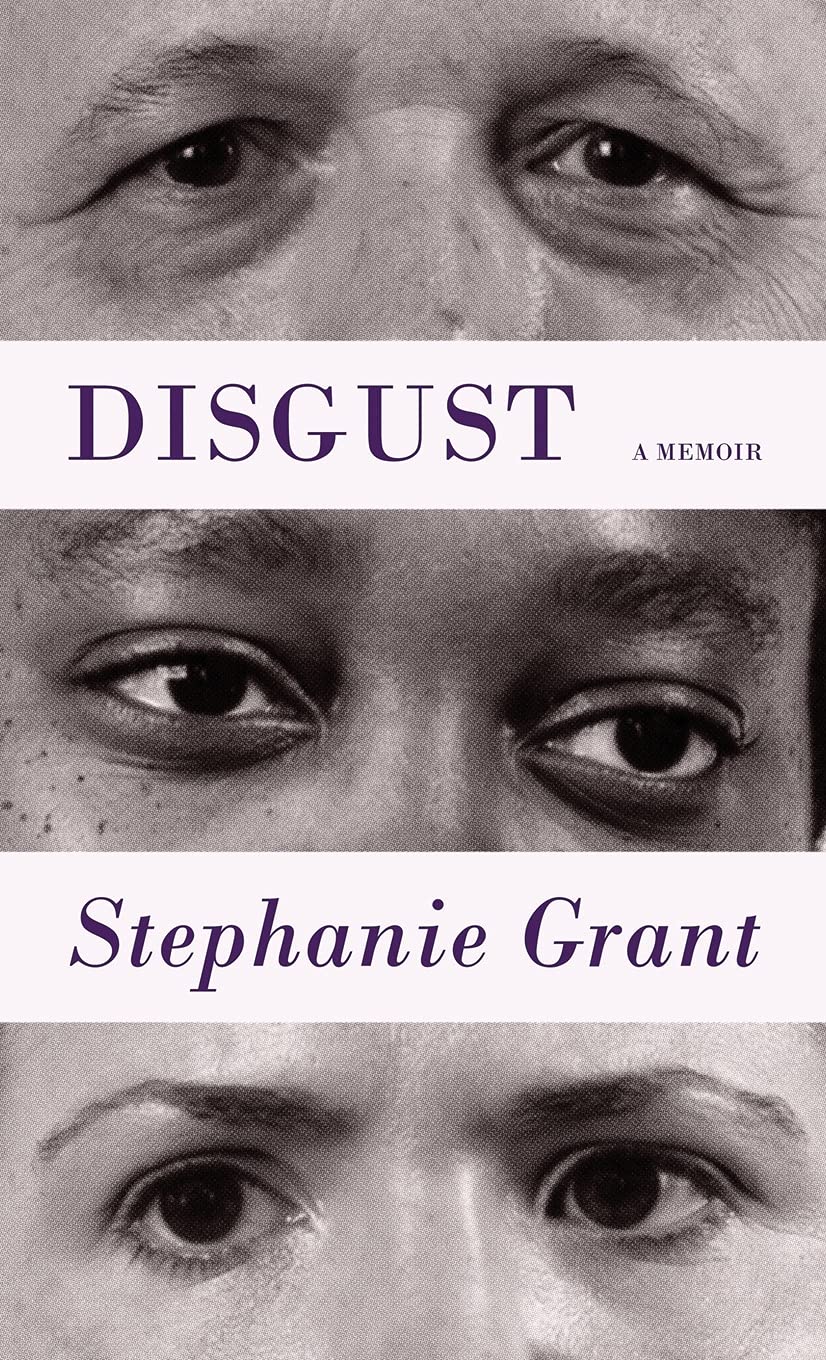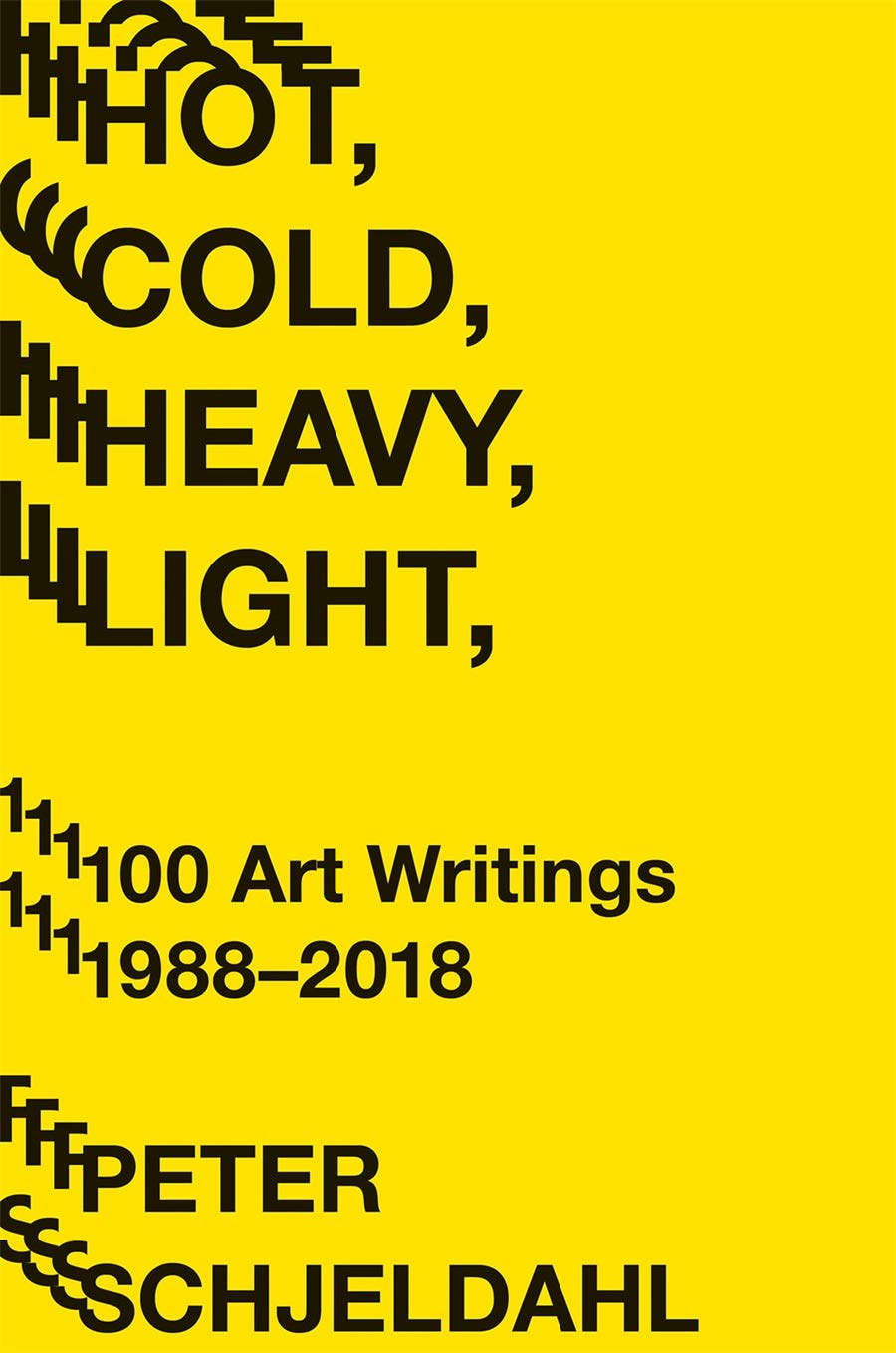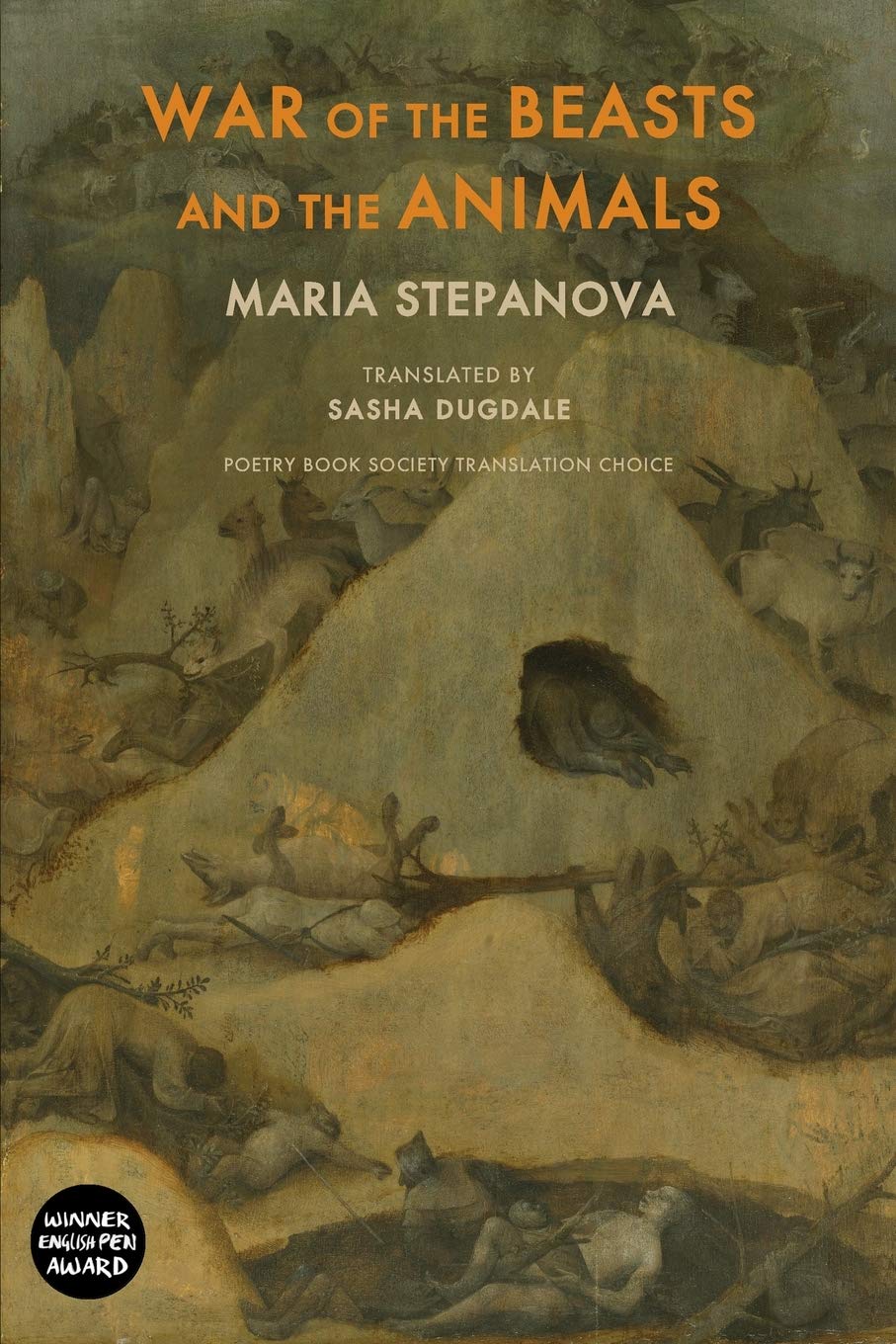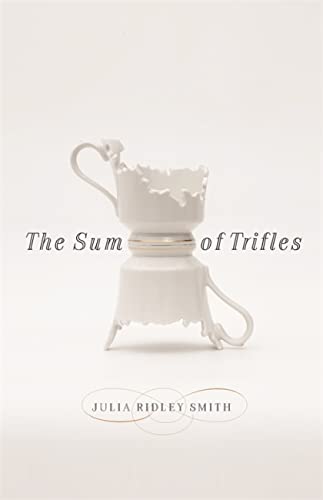The Sum of Trifles, by Julia Ridley Smith. University of Georgia Press, 238 pp., $22.95.
Julia Ridley Smith’s memoir-in-essays, The Sum of Trifles, begins with an invitation from her mother to “come in the house.” The invitation is a memory, for Smith is visiting the house well after her parents’ deaths. Her sharp, chain-smoking mother and introverted, jazz-loving father had been antique dealers and so the house, where Smith grew up, is crowded with dusty antiques, trinkets, and collections. As she sadly, carefully surveys their many leavings, she faces one of the greatest challenges of her adult life: she and her brother must catalogue and dispose of the innumerable artifacts–these “trifles”–that constitute the world she knew intimately. What to keep? Trash? Donate? Sell?
Her memoir sorts through the most important of these belongings, everything from a valuable Japanese, eight-paneled screen to her diabetic father’s prosthetic legs. “To endure this ordeal,” Smith writes, “I must break my attachment to this house.” The emotional core of Smith’s challenge is that our attachment to things binds us to memory and loved-ones in subtle and sometimes intractable ways: “if objects have the power to connect me to people who are no longer here, then maybe they . . . possess a kind of magic. And if they are magic, how dare I let them go?” Smith’s efforts to disentangle herself from her parents’ world take her on a journey that plumbs the depths of emotional attachment and personal obsession.
We learn much about Smith’s childhood in North Carolina, how and why she became a writer, and how, too, she came to cherish antiques and the history they embody. This alone would make The Sum of Trifles an engaging read, for Smith is a frank and lively guide. But we get much more when Smith’s love of history compels her to face the jarring truth of her once-prestigious heritage, founded at Oaklana plantation, the family’s storied homestead: “the stain of slaveholding mark[s] my mother’s side of the family” and she wonders, “How many thousands of souls did my ancestors . . . ‘own’ between 1619 and 1863?” Her research into this shadowed past pains her greatly. As the complexities of her family’s history deepen and the contradictions grow more confounding, Smith asks, “When does the habit of analysis become a liability rather than a gift?”
Ultimately, Smith disengaged herself from an unhealthy attachment to her parents’ world but then, emptied out, asked herself “what, who, . . . was [I] going to be . . . ? I wasn’t sure yet. . . .” The last third of her book takes up this challenge as she strives to make peace with her ancestors, including one who was instrumental in crushing Nat Turner’s “rebellion” in 1831. She examines the myths of “faithful slaves,” among them the “dedicated” nannies and nursemaids. When she donates a beloved heirloom to a North Carolina museum–a rare and beautiful quilt passed down the generations from her great-great-great grandmother (Margaret)–Smith observes, “If enslaved women didn’t work directly on the quilt, they surely performed the child minding and other domestic work that freed Margaret to sit and sew.” Smith’s unsparing examination of her once-comforting heritage leaves nothing unquestioned and no one, including herself, absolved of their sins.
In the end, The Sum of Trifles, is an examination of profound loss, first the loss of beloved parents, then the loss of the world they created, and then, by extension, the loss of the myths that world embraced. But this is neither a lament nor a tragedy: it is, rather, a revelation arrived at by a stubborn intellect who has the grace, wit, and good sense to know what’s right and how much better the world could, and should, be. As Smith says at the book’s end, “Grief, I’m realizing, doesn’t have to set you apart forever. Eventually, it might become a thing–perhaps the thing–that connects you to other people.“
—Ron Tanner

Disgust: A Memoir, by Stephanie Grant. Scuppernong Editions, 170 pp., $18.
“[A]gainst all reason, we have persisted in these bodies,” Stephanie Grant writes at the close of Disgust: A Memoir—an episodic, hybrid-genre work that moves like a lyric meditation. As her debut memoir unfolds over six sections, featuring a series of prose blocks that cascade and fold back into each other, Grant explores class, gender, mental health, relationships, love, sex, and sexuality, among other things, alongside the eponymous sensation. Her juxtapositions of disgust and love—taut poles of tension reminiscent of poetry—through these various threads demonstrate the power of hybridity and the connective tissue that develops through brief bursts of prose.
Although there are many threads and quotable gems like “His life-long proximity to death … made him uninterested in self-censure, in small-talk, in politesse,” I am most interested in the narrative fiber concerning matrilineal relationships. The self-reflexive and self-referential text explores disgust, depression, and the dexterity it takes to parent through three generations of women: Grant, her mother, and her daughter. In particular, the rendering of her relationship with her mother demonstrates what Grant calls the “grueling muscularity” it takes to love someone. Instead of writing plainly the frustration or, perhaps more aptly, disgust, in moments with her late mother—who, even at the end of her life, never made peace with Grant’s sexuality, wishing Grant hadn’t mentioned it on the jacket copy and in the acknowledgments of her debut novel The Passions of Alice—Grant writes about her mother with a mix of resolve, understanding, and tenderness in the midst of her pain.
In the final section of the memoir, in discussing Catholicism and its condemnation of birth control, Grant writes of her mother—who suffered from postpartum depression for which she underwent electroconvulsive therapy in 1955: “What courage it must have taken to have sex at all when she knew where it might lead her.” It could have been easy for Grant to be disgusted by her mother’s disgust in these pages, but through various vignettes—like how, at six, Grant was hospitalized with pneumonia and missing her mother manifested in a lump in Grant’s throat “whose particular pain” she can still recall—Grant demonstrates the complexities of love. One of my favorite moments is the relief Grant expressed when she learned of her mother’s depression: “the mystery of who she was had been solved.”
In that final section, Grant writes with devastating clarity “[i]t turns out that disgust and love are not incompatible, not at all. Instead, each feeling creates space for the other: there is no intimacy without disgust. And this is the real pain of our relationships.”
—Chet’la Sebree

Hot, Cold, Heavy, Light: 100 Art Writings, 1988–2018, by Peter Schjeldahl. Abrams Press, 390 pp., $28.
Reading Peter Schjeldahl is a little like listening to a loquacious and highly informed friend spout off in your living room. The topic of choice is painting, and he holds you in thrall. His style is inimitable and immediately recognizable, made up of equal parts wit, conversational intimacy, and an unjaded enthusiasm for looking. Too little art writing possesses even one of these attributes. Put them together and you have a talent worthy of the mighty New Yorker, where Schjeldahl has served as chief art critic for over twenty years. The present book collects one hundred “writings”—Schjeldahl’s signature hybrid of chummy reportage and serious criticism—all but a few originally published in The New Yorker, 7 Days (a short-lived but influential serial from the late eighties), and The Village Voice.
That Schjeldahl was a poet before he was an art critic is clear in his appetite for delicious, sometimes wild simile. The painter Jay Defeo’s textured strokes are “as abrasive and as precise as the caress of a cat’s tongue.” The gloomy work of Belgian painter Luc Tuymans is “as necessary as a raft in a flood. The flood is the noise of the world. The raft is silent.” Christopher Wool’s technique “suggests the ledges to which a rock climber clings by his fingernails.” It is part of Schjeldahl’s art to present these comparisons as toss-offs. In fact, they are a key structuring device; often an essay will build toward one of these similes, so that it becomes the definitive observation of the argument. Readers of poetry may recognize in these figurative flights the principle of ekphrasis, the shop term for an attempt to capture visual art in language. Schjeldahl is an unacknowledged master of the genre.
What of his taste? A few tidbits won’t give away too much: Arshille Gorky is his favorite modern painter and Matisse’s Piano Lesson his favorite work of twentieth-century art; Las Meninas is the “best painting in the world” (this in an assessment of Zurburan); Warhol receives his due in the collection’s first essay—no accidental placement, to be sure. If these seem like marks of a fairly conventional aesthetic appetite, much of Schjeldahl’s appeal is in his manner of grounding a verdict in such broadly familiar cultural coordinates. In truth, his taste is catholic, capacious, and ungrudging: liberal in the genuine sense. His way of bringing a common critical lens to both old masters and the latest talents is part of his charm. Only occasionally does the method fall short, as he readily concedes in a piece on the Spanish virtuoso: “The idea of reviewing Velázquez is silly.”
What’s not silly are Schjeldahl’s fresh takes on masters to whom overfamiliarity may desensitize us. On the Frick’s celebrated 2013 Piero della Francesco exhibition:
Piero’s characters are sometimes described as remote, without personality. But he simply combs out anything incidental to being a human creature, in solid flesh … The central Christian enigma—God incarnate, as a man who lived, suffered, and died—plays like a bass line beneath every passage of Piero’s art.
As usual, the simile is spot on. Here and throughout, Schjeldahl reminds us that one mark of a first-rate critic is the ability to articulate what for most viewers remains inchoate, and to do so with precision and flair.
For the critic, according to Schjeldahl, is no less a performer than the artist. In his concluding “credo” he takes Oscar Wilde as his spirit animal, arguing that the “critic-as-artist”—a term adopted from Wilde’s 1890 essay by that title—is first and foremost a persona, a “fictional being,” whose role is not only to instruct but to entertain: “Bringing to bear and even exaggerating our peculiarities is both the pleasure and the duty of dedicated critics.” Or as Wilde puts it:
[It] is only by intensifying his own personality that the critic can interpret the personality and work of others, and the more strongly this personality enters into the interpretation the more real the interpretation becomes.
For Schjeldahl as for Wilde, and maybe for that friend in your living room, being right or wrong is secondary to the act—indeed, the moral imperative—of being fully engaged and fully engaging. Editor Jarrett Earnest has provided us with an essential selection of commentary by the most readable art critic writing today, and perhaps the most discerning.
—Andrew Ciotola

War of the Beasts and the Animals, by Maria Stepanova, tr. Sasha Dugdale. Bloodaxe Books, 128 pp., $17.95.
Sasha Dugdale’s translation of this first volume of the Russian poet Maria Stepanova’s work into English was a translation event in the UK, winning an English PEN award as well as a Poetry Society translation commendation. For anyone interested in lyric Modernism and its various inheritances and legacies, this is an essential volume. Stepanova’s signature style is to create lyric skeins, often drawing heavily from the Russian folk tradition. In this an apt comparison might be Vasko Popa, but Stepanova’s political engagements are more pronounced than Popa’s. The title sequence of this collection has roots in the Russian-Ukrainian conflict, and in the propagandistic language brought to bear on that conflict (or denied it) by the Russian state. As Dugdale notes in her useful introduction,
The distance between myth, shored up by intricate and incredible propaganda stories and credible and researched truth grows ever wider, and as the words diverge from anything that might be called ‘truth’ so the language bends under the strain of its falsehoods. When Maria and I spoke bout the impetus of the poems she noted that the language she had hitherto used for poetry had been deformed by power and untruth and it was no longer possible for her to write in the way she had written—she described it as the ‘internal fragmentation of the language’. Her visual image for this was the classical language shattering, as if after an explosion, and all the splinters hanging in the air.
The obvious comparison in this instance is not Popa but Celan, and indeed Celan, along with Eliot and other Modernist poets, makes his appearance in these pages. But Stepanova’s response to this predicament is less Celan’s distortion and compression of word units and syntax (at least as visible in Dugdale’s translations) than tracts of lyric space inhabited by language that has been creatively unmoored from systems of narrative reference, including propaganda.
Dugdale is right, in her introduction, to suggest that Stepanova’s Modernist project has aims other than Eliot’s. Her allusions are not “heap[s] of broken images…shored against [our] ruins.” They are, by way of Celan, exercises in complicity: in reminding the reader that complicity is inextricable from experience. By reading the poems, by letting her skewed folksongs and nursery rhymes play against the dark screen of the reading mind, we are drawn into what one might call the web of available complicities, in which we are of course already implicated. In recognition of this, Dugdale has chosen, in places, to substitute English literary and political allusions to Dugdale’s more recondite Russian inferences.
Dugdale refers to this quality of Stepanova’s work as “sinister,” but it seems to me this is not quite right, unless one returns to the root of that word: this is left-handed lyric, that accosts the reader from the side and from behind: the language meets the reader head-on, but somehow the speaker, or singer, of these lyrics is always at the edge of the readerly field. There is a dreadful if also hypnotic, singsongy quality to swatches of Stepanova’s verse, carefully poisoned with parody, including self-parody. “I’m a bagel I’m a bagel says the speaker-without-an-I,” Stepanova intones on the first page of her long poem “Spolia,” from 2014; on the next page we get “Dingle-dangle Pushkin-Schmushkin” as well as the Russian Symbolist poet Innokenty Annensky “…Stuck between heresky and theresky.” This is bitter doggerel. “War of the Beasts and the Animals” (2015), the other long poem presented here, is an explicit riff on Eliot’s The Waste Land; in place of Phlebas we get Vlas, a volunteer in the Donbas conflict (we’re not told on which side) about whom, in the fortnight since he was killed in an explosion, one can only, and lamely, lament: “Vlas was nicer than you.”
Memory is also a form of myth for Stepanova: the emplacement of a narrative (or narratives) on the shards of recollected experience (in language) hanging blasted in that same air. War of the Beasts and the Animals is peppered with moments that appear to be family recollections, either framed in the poet’s voice or in some close friend or relative’s: “Do you remember, Maria,” opens one section of “Spolia.” Memory is tender, memory is unavoidable, but memory, too, is complicit: as complicit as any other form of narrative, and almost always self-serving. Memories mix with the poetic tradition mix with propaganda, as in these lines, which open out from the Donbas conflict:
“A memory / won’t save us,” she later asserts, flatly. It’s from these diverse strands that complicity begins to assert itself, as a way—perhaps an unavoidable way—of living-in-language.
What redeems this work from the soul-curdling bitterness of so much Eastern European poetry of the past half-century, as for Eliot, as for Popa, is myth, by which I think Stepanova simply means the figuration of experience (all experience, but rightly including the experience of the imagination) in language. Myth is real, at least as a field of reference and signification, and if it can be used by the state for propaganda, or reduced to doggerel, it also has an independent power which the poet can marshal, always aware that in so doing she becomes part of the pattern—and therefore part of the problem. Midway through the title poem, with an embittered, backward glance at Eliot, she writes:
Another warped folksong, crossed with a sonnet. What distinguishes Stepanova’s narrator from Eliot’s is that while Eliot’s speaker ends his poem fishing, pole in hand, Stepanova’s is “empty-handed and unsure.” Anything retained in the hand can become, for Stepanova, a weapon, and her unsureness is, she hopes, a talisman against her own instrumentality.
While these two long poems have received the lion’s share of critical attention, the earlier lyrics presented in this volume’s second half emphasize Stepanova’s lyric reach. Selections from her 2012 collection Kireevsky (named for a 19th-century Russian folksong collector) confirm the comparison to Popa: these are dark ballads, yes, but ballads just the same, with the characteristic irony of the longer poems turned back to a minimum. “Fish” and “Bus Stop: Israelitischer Friedhof” are bravura lyric performances. They echo the rich if guarded lyricism of Elena Shvarts, especially in her longer works (“The March of the Fools on Kiev” and “Grand Elegy on the Fifth Corner of the Earth,” both available in English in Birdsong on the Seabed, coincidentally also translated by Dugdale). Dugdale concludes this volume with “The Body Returns” (2018), a sequence in homage to and in dialogue with the Danish poet Inger Christensen: as purely lyric as anything here, and perhaps the most hopeful of these remarkable texts, if a dark hope—such a thing as dark hope—is possible.
—G.C. Waldrep

